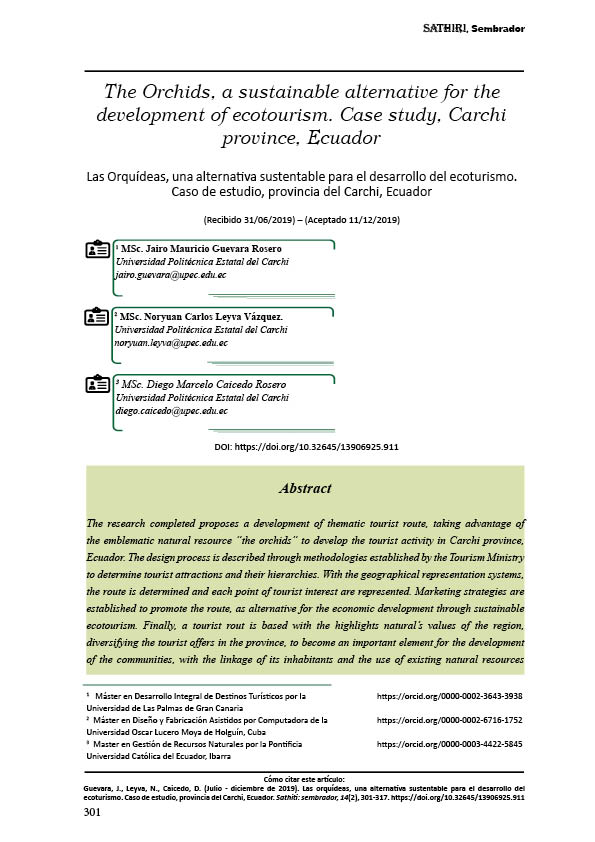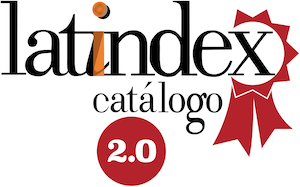The orchids, a sustainable alternative for the development of ecotourism. Case study, Carchi province, Ecuador
DOI:
https://doi.org/10.32645/13906925.911Keywords:
Orchids, ecotourism, sustainable, natural resources, tourist routeAbstract
The research completed proposes a development of thematic tourist route, taking advantage of the emblematic natural resource "the orchids" to develop the tourist activity in Carchi province, Ecuador. The design process is described through methodologies established by the Tourism Ministry to determine tourist attractions and their hierarchies. With the geographical representation systems, the route is determined and each point of tourist interest are represented. Marketing strategies are established to promote the route, as alternative for the economic development through sustainable ecotourism. Finally, a tourist rout is based with the highlights natural"™s values of the region, diversifying the tourist offers in the province, to become an important element for the development of the communities, with the linkage of its inhabitants and the use of existing natural resources and improve living conditions and encourage new ventures, as well as, the conservation of the environment.

Downloads
Published
Issue
Section
License
Copyright (c) 2019 Jairo Mauricio Guevara Rosero, Noryuan Carlos Leyva Vásquez, Diego Marcelo Caicedo Rosero

This work is licensed under a Creative Commons Attribution-NonCommercial-NoDerivatives 4.0 International License.
El autor mantiene los derechos morales e intelectuales de su obra, autorizando a la editorial de la revista Sathiri la difusión y divulgación de su contenido con fines estrictamente académicos y de investigación, sin fines de lucro. Así mismo, se autoriza que la obra sea descargada y compartida con otras personas, siempre y cuando no sea alterada y se reconozca su autoria.





















